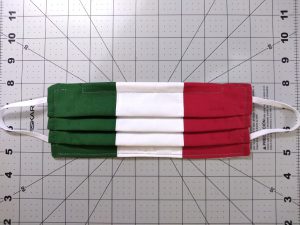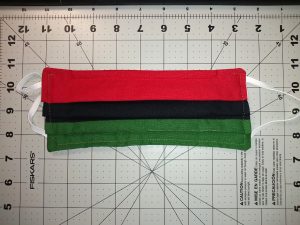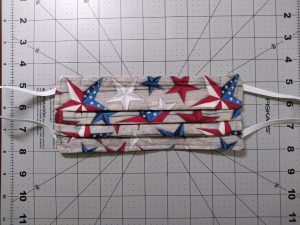Oct 11, 1755: Spanish chemist and mineralogist, Fausto D’Elhuyar, was born. He assisted his older brother Juan José in experiments to separate tungsten metal from its wolframite ore in 1783.
Two years earlier, Swedish chemist Carl Scheele discovered tungstic acid, though he did not isolate the elemental form of the metal. The mineral Scheele was working with was called “tung sten” (heavy stone in Swedish). This mineral is now known as Scheelite.
The Elhuyar brothers, working at the Seminary of Bergara, succeeded in extracting the metal by reducing tungstic acid with charcoal. For the first time, Basque scientists entered the history of science. Each became a director of a school of mines, but in different countries. Although Juan José discovered tungsten metal, Fausto became better known.
Oct 11, 1758: German physician and astronomer,Heinrich Wilhelm Matthaus Olbers, was born. While practicing medicine at Bremen, he calculated the orbit of the comet of 1779, discovered the minor planets (asteroids) Pallas (1802) and Vesta (1807), and discovered five comets, Olbers invented a method for calculating the velocity of falling stars (meteors). He is also known for Olber’s paradox, which asks “why is the night sky dark if there are so many bright stars all around to light it?”
Oct 11, 1799: Joseph Gillott, a pioneer of the steel pen, was born in Sheffield. An English engineer Bryan Donkin patented a steel pen point in 1803 but did not commercially exploit it. In 1830, steel makers William Joseph Gillott, William Mitchell, James Stephen Perry, working mainly in Birmingham, England, developed the machine production technique for cheap long-wearing steel pen nibs. Tempered steel sheet was stamped to produce the basic nib, which was then shaped, slit and the tip formed. More than most other metals, stainless steel has the elasticity needed to give the variety of penmanship styles available from the quill pen. By 1850 quill pen usage was fading and the quality of the steel nibs had been improved by tipping them with hard alloys of iridium, rhodium and osmium.
Oct 11, 1811: The first steam-powered ferryboat, the Juliana, began operating between New York City and Hoboken, New Jersey. Its inventor, John Stevens, designed improvements in steamboats, obtained one of the first US patents in 1791. He experimented on the Passaic River, from 1798 to 1800, with the steamboat, Polacca. The experiment was unsuccessful due to vibrations and leaks.
By 1803, Stevens had patented an improved multitubular boiler and outfitted the Little Juliana which sailed successfully in New York harbor in 1804. It was one of the earliest twin screw sailboats. After building other ships he bought a commercial ferry license in 1811 and operated a horse-powered ferry while building the first steam ferry, Juliana.
Oct 11, 1844: American businessman, Henry John Heinz was born. He founded the H.J. Heinz Co.and invented its “57 varieties” slogan. Heinz was a natural salesman. His entrepreneur and business genius had roots in post-Civil War Pittsburgh, where iron, steel, and glass factories were forging industrial America. By age 12 he was peddling produce from the family garden. At 25, in 1869, he and a friend launched Heinz & Noble. Its first product was Henry’s mother’s grated horseradish, bottled in clear glass to reveal its purity. Heinz & Noble thrived until an overabundance of crops in 1875 brought bankruptcy. Nevertheless, Henry plunged back in, eventually building a model factory complex along the Allegheny River. By 1896, at the age of 52, the pickle king had become a millionaire and celebrity.
Oct 11, 1855: American metallurgist, James Gayley, was born. He invented a device to ensure uniform humidity in the air stream going into blast furnaces. With prior experience at several iron works, Gayley was hired by the Edgar Thomson Steel Works as Superintendent of the Blast Furnaces in 1885. Gayley was an economizer and made a record reductions in coke consumption. He invented the bronze cooling plate for blast furnace walls, the auxiliary casting stand for Bessemer steel plants, and was the first to use the compound condensing blowing engine with the blast furnace.
He also invented the dry-air blast, for which the Franklin Institute awarded him the Elliott Cresson medal. Gayley rose to first vice-president of the US Steel Corporation and acquired a large fortune.
Oct 11, 1865: American zoologist, Charles Atwood Kofoid, was born. His classification of many new species of marine protozoans helped establish systematic marine biology.
Oct 11, 1871: American archaeologist and social activist, Harriet Ann Boyd Hawes, was born. Hawes gained renown for her discoveries of ancient remains in Crete. She went to Crete in 1900, and with the encouragement of Arthur Evans, began to excavate a Minoan site at Kavousi where she discovered Iron Age Tombs. From 1901-05 she led a large team that excavated the early Bronze Age Minoan town of Gournia, becoming the first woman to head a major archaeological dig.
As a community of artisans, Gournia was of particular interest to archaeologists because it complemented the more elaborate palaces being unearthed at Knossos and elsewhere. In 1908 she published her monumental work on Gournia. During WW I she went to Corfu to help nurse the Serbians.
Oct 11, 1881: British physicist and psychologist, Lewis Fry Richardson, was born. He was the first to apply mathematics to accurate weather prediction. In 1922, Richardson applied the mathematical method of finite differences to predicting the weather. He was also a chemist with National Peat Industries and in charge of the physical and chemical laboratory of the Sunbeam Lamp Co.
Early application of mathematical techniques to weather forecasting were severely limited by extensive computation times: three months to predict weather for the next 24 hours. With electronic computers available after WW II, his methods became practical. He wrote several books applying mathematics to the causes of war. He contributed to calculus and the theory of diffusion for eddy-diffusion in the atmosphere. The Richardson number, a quantity involving gradients of temperature and wind velocity, is named after him.
Oct 11, 1881: Roll film for cameras was patented by David H. Houston, who was a Scottish immigrant that travelled to North Dakota in 1879 to homestead a 400-acre farm, 30 miles NE of Fargo. His many patents ranged from a disc plow to a portable camera. George Eastman bought 21 patents on cameras from him, including the invention that made Houston famous. This was a portable camera designed in 1879, for which Houston received $5000 plus monthly royalties for life. This camera suited the everyday person, rather than a professional photographer’s big studio camera on wheels. First sold by Eastman in 1881 for $25, the Kodak camera came loaded with a 100-exposure film that Houston would process and then reload the camera for $10. Houston died a rich man in 1906.
Oct 11, 1884: German chemist, Friedrich Karl Rudolf Bergius, was born. In 1921, Bergius invented a process to convert coal dust and hydrogen gas directly into gasoline and lubricating oils without isolating intermediate products. During distillation of coal, Bergius succeeded in forcing hydrogen under high pressure to combine chemically with the coal, transforming more carbon from the coal into oils than is possible with conventional distillation. For his work in developing the chemical high pressure hydrogenation method necessary for this process he shared the 1931 Nobel Prize for Chemistry with Carl Bosch of Germany.
Oct 11, 1887: A patent for the adding machine was granted to Dorr Eugene Felt of Chicago, Illinois. His Comptometer was the first practical key-driven calculator with sufficient speed, reliability, and cost to become commercially successful.
He called his original prototype the “Macaroni Box”, a rough model that Felt created over the year-end holidays in 1884-85. The casing was a grocery macaroni box, assembled with a jackknife using meat skewers as keys, staples as key guides and elastic bands for springs. He improved his design, producing his earliest commercial wooden-box Comptometer from 1887 thru 1903, leading to the first steel case Model A in 1904. Electric motor drive was introduced in the 1920’s.
Oct 11, 1938: R. Games Slayter and John H. Thomas patented glass wool (fiberglass) and the machinery to make it. Games Slayter, the driving force behind Owens Corning technology and innovation, sought to make a finer glass fiber material. In 1932, Dale Kleist, a young researcher under Jack Thomas (Slayter’s research assistant), working on an unrelated experiment accidentally caused a jet of compressed air to strike a stream of molten glass, resulting in fine glass fibers. By fall of 1932, Kleist refined the process by using steam, to make glass fiber material thin enough for commercial fiberglass insulation. From March 1933, Games Slayter directed Jack Thomas in experiments using glass wool instead of natural or other synthetic fibers on textile machinery.
Oct 11, 1945: American physician, Robert Peter Gale, was born. He co-founded the International Bone Marrow Registry, and was a pioneer in bone marrow transplantation. Gale received much attention for the assistance he gave to foreign governments in treating radiation victims — to the Soviet Union (1986) after the Chernobyl disaster and to Brazil (1987) following an accident in Goiania. As a specialist in bone marrow transplants, he volunteered to treat Chernobyl victims and was invited by Mikhail Gorbachev to travel with a group to Moscow immediately after the April 1986 accident. He operated with bone marrow transplants on 13 Chernobyl victims, however, many of the highly exposed Chernobyl survivors have since died from latent radiation effects.
Oct 11, 1957: The Jodrell Bank radio telescope, the world’s largest radio telescope at the time, began operating. Though the telescope is popularly known for tracking and communicating with man-made satellites, its prime function is the study of the universe by means of radio waves emitted by distant stars, galaxies, and quasars.
Oct 11, 1958: The lunar probe Pioneer 1 was launched by a Thor-Able rocket from the Eastern Test Range, now called the Kennedy Space Center. Its intended mission was to reach the moon but it failed to go as far as planned and fell back to Earth. It transmitted 43 hours of data before burning up in the atmosphere. NASA had just been formed at the beginning of the same month.
Oct 11, 1968: The first manned Apollo mission, Apollo 7, was launched on a Saturn 1-B rocket from Cape Kennedy. The astronauts onboard were Captain Wally Schirra, Jr. (Navy), with crew members Donn Fulton Eisele (Air Force) and R. Walter Cunningham (civilian). They circled for 11 days, up to 183 miles above the Earth, in 90 minute orbits. They tested maneuvering the Apollo, first by detaching it from the upper stage of the rocket. Then, they turned the Apollo around to reposition its nose toward the rocket. This maneuver was vital for future Moon missions.
Oct 11, 1983: The last hand-cranked (magneto) telephones in the United States went out of service as 440 telephone customers in Bryant Pond, Maine, were switched to direct-dial service. Prior to that time a resident’s number could be as short as two digits. The last hand-cranked telphone call in Bryant pond was made the following day, on Oct 12, 1983.
Oct 11, 1994: The space probe Magellan ended its mission to explore Venus when flight controllers lowered its orbit into Venus’ dense atmosphere and it plunged toward the surface. Radio contact was lost the next day. Although much of Magellan was vaporized, some sections are thought to have hit the planet’s surface intact.
Magellan was launched from the cargo bay of Space Shuttle Atlantis on May 4, 1989. Magellan arrived at Venus and entered orbit on Aug 10, 1990. Magellan collected radar imagery of the planet’s surface showing large shield volcanoes, lava plains, and few craters.
Oct 11, 1995: Americans Mario Molina and Sherwood Rowland, and Dutch scientist Paul Crutzen won the Nobel Prize in chemistry for their work warning that CFCs are eating away Earth’s ozone layer. In 1970, Dr. Crutzen showed that nitrogen oxides are important in the natural balance of ozone in the upper atmosphere. Research rapidly escalated into global biogeochemical cycles. In 1974, Drs. Molina and Rowland established that there was a threat to the ozone layer from man-made chlorofluorocarbons (CFCs), such as gases then used in spray cans. More than a decade before the Antarctic ozone hole was discovered, their research stirred the international response to control the emissions of CFCs to protect the ozone layer.




Recent Comments